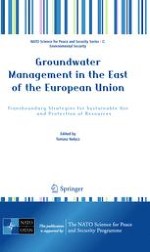This volume is the result of work carried out under the NATO SPS Study Pilot Project "Sustainable Use and Protection of Groundwater Resources - Transboundary Water Management." It contains basic information on hydrogeological conditions, groundwater management and monitoring in areas of the Belarus, Lithuanian, Polish and Ukrainian borders, simultaneously borders of the European Union with its eastern partners. In view of the importance of the rational utilization of groundwater reserves, which is essential for our future existence, the book presents recommendations for a united methodology of an integrated groundwater monitoring system in this transnational area. The contributions also cover environmental and surface water issues that have direct effects on groundwater resources. The financial dimension of resource mobilization for environmental projects in Eastern Europe also features as part of a complex project solution.
